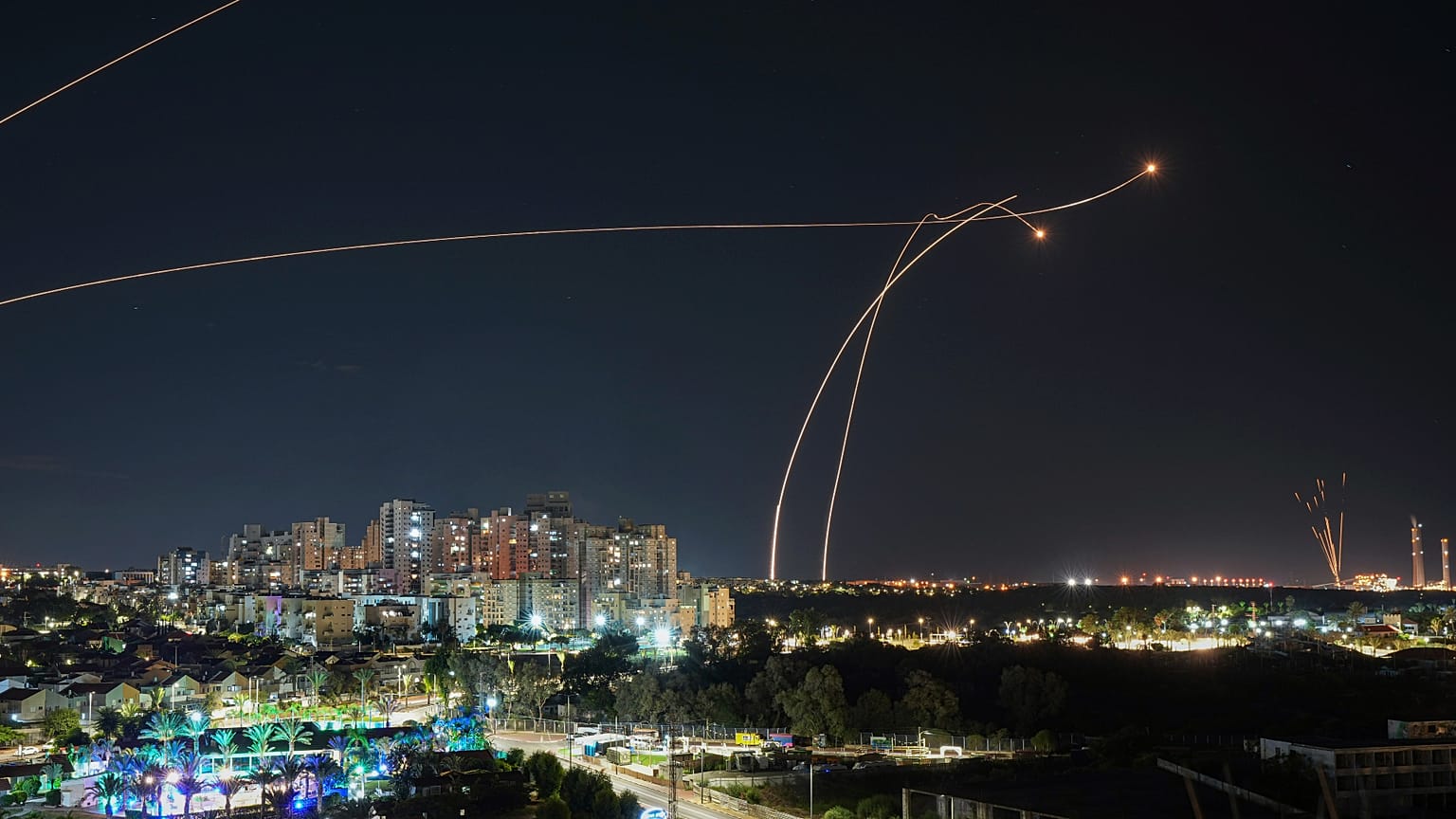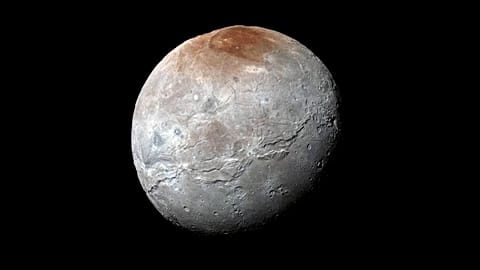In operation since 2011, the Iron Dome is Israel's first line of defence against rockets. We spoke to an expert to understand how the system works.
On October 7, Hamas militants launched a barrage of rockets from the blockaded Gaza Strip towards Israel as part of a surprise attack that has reignited the Israeli-Palestinian conflict.
Key to repelling rockets on the Israeli side is the Iron Dome, a missile defence system that has become a cornerstone of the country’s security since its initial deployment in 2011.
In the months since the Hamas attack and Israel's retaliatory military ground offensive in Gaza, the Iron Dome has once again been tested with attacks by Iran on April 13 and 14, and more recently on October 1.
In April, around 300 drones, ballistic, and cruise missiles were launched by Tehran following a suspected Israeli strike on a Iranian consulate in Syria. Most of these were intercepted by the Iron Dome.
On October 1, nearly 200 projectiles were fired on Israel in retaliation for recent Israeli airstrikes against Hezbollah targets and a limited ground incursion in Lebanon. Again, the Iron Dome intercepted many but not all of the missiles.
How exactly does the Iron Dome work?
Developed by state-owned Israeli defence company, Rafael, it has proved to be particularly effective over the years. Israeli authorities have claimed that the military technology boasts a 90 per cent success rate at intercepting enemy rockets.
Each Iron Dome battery, of which there are believed to be at least 10 in operation on Israeli territory, has three components. The first is a radar that detects incoming rockets. Then there is the Tamir interceptor missile that is launched to intercept the incoming rocket in the air.
Finally, there is a command and control centre which contains the software that creates and sends the message from the radar to the interceptor missile.
The system is designed to intercept rockets with a range of between 4 km and 70 km.
How effective is the Iron Dome?
Despite the 90 per cent success rate offered by Israeli military officials, Jean-Loup Samaan, a Senior Research Fellow at the University of Singapore’s Middle-East Institute, describes the issue of the Iron Dome’s effectiveness as "very contentious".
"The reason for that is at the end of the day, we have to rely on estimates and data, which is the data of the Israeli government," he explained to Euronews Next.
"So far, what the Israeli government has said is that the effectiveness of Iron Dome is pretty high. They've been talking about a 90 per cent interception rate. The question is first, what does that interception rate exactly mean?" he added.
Samaan points out that the Iron Dome only intercepts or destroys rockets which are considered to threaten civilian urban areas.
"If you have a rocket that is sent from Gaza to an unpopulated area in Israel, Iron Dome will not be activated. So it's hard to say exactly what is behind the 90 per cent effectiveness rate," he said.
The other issue related to the effectiveness of the Iron Dome is that Samaan contends the system has not deterred Hamas or other Palestinian militant groups from launching rocket attacks targeting Israeli territory.
"On Saturday, 7 October, Hamas fired more rockets, basically, than during the last ten days of the conflict between Hamas and Israel in 2021," Samaan said.
"So it tells us that Iron Dome, yes, may be effective operationally, but strategically it doesn't really deter the Palestinian organisations," he added.
How is the Iron Dome financed?
Keeping the Iron Dome operational comes at a high price. According to Samaan, just one of the interceptor Tamir missiles is estimated to cost around $50,000 (€47,251).
Originally Iron Dome funding was undertaken by Israel, but because of the high cost of the system, the country has had to rely on its long-time ally, the United States.
A report from the US Congressional Research Service states that the US has contributed nearly $3 billion (€2.8 billion) to Iron Dome batteries, interceptors, co-production costs, and general maintenance.
"Starting in 2016, the US and Israel considered that support to Israel's missile defence and in particular to the development and production of Iron Dome was a central part of the bilateral relationship," Samaan explained.
"The idea was that Israel was able to find a technology that can protect its territory, but financially it needs the support of the US to maintain that capability," he added.
Reuters reported on Thursday that US President Biden would be requesting a further $14 billion (€13.2 billion) in military aid for Israel from Congress.
Fears of escalation
In the early days of the current conflict, the sheer number of rockets that Hamas fired towards Israel, estimated to be between 2,200 and upwards of 3,000 (though Hamas claims to have fired 5,000), seemed to succeed in overwhelming the system.
Perhaps the biggest concern at present, with respect to Iron Dome’s capability to continue protecting Israeli territory, is the prospect of a regional escalation in the current conflict.
"One of the reasons why Israel, and maybe more importantly the US, wants to prevent regional escalation is that if you have Hezbollah in Lebanon starting to get involved in the conflict, Hezbollah has a much bigger firepower capability than than Hamas," said Samaan.
"It has hundreds of thousands of rockets. So Hezbollah could very quickly overwhelm Iron Dome".
Since mid-September, Israel has been mounting an operation against Hezbollah.
On September 17, thousands of pagers exploded in Lebanon, killing and maiming Hezbollah operatives followed the next day by a new wave of explosions in devices including walkie-talkies.
Israel announced on September 20 that it had killed Ibrahim Akil, Hezbollah’s military commander, along with more than 30 others in airstrikes on Beirut.
Around 1,200 Israelis were killed or taken hostage in Hamas' attack on October 7.
In response, Israel ordered a "complete siege" of the Gaza Strip, has bombarded the enclave with airstrikes and launched a ground campaign inside Palestinian territory.
UN experts have raised "serious humanitarian and legal concerns" over the siege, with Gazans deprived of food, water, electricity, and fuel.
The Palestinian health ministry has reported that 41,595 people have been killed in Gaza as of September 29.
For more on this story, watch the video in the media player above.


















